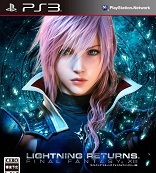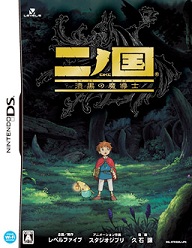Fire Emblem
Game Boy Advance
Reviewed: 09/12/2004
 |
After being named the runner-up for RPGLand’s Game Boy Advance RPG of the year in 2003, you know our review of Fire Emblem is going to contain much praise, love, and gushing. But rest assured, the game deserves every bit of it.
To start off with a brief history lesson, the Fire Emblem series has been kicking the strategy RPG scene for over a decade, but this Game Boy Advance title (known in Japan as Fire Emblem: Rekka no Ken) is the first one of the bunch to make the trip to North America. And, as a very biased reviewer, I say, “It’s about damn time.” Tactical RPGs have recently been increasing in popularity and overall quality, and Nintendo picked a good time to let the handheld RPG lovers enjoy this gem. Why the usage of “gem?” Let’s find out.
 |
| The still-frame story shots aren’t bad… |
As you probably already know, the main focus of a tactical RPG such as Fire Emblem or Final Fantasy Tactics is on the the battle system and interface. Things such as sound, story, and graphics are usually put in lower priorities (and in that order). The details of FE’s play include a weapons triangle, determining what kinds of weapons are good/bad against others (like how lances are great against swords, but not axes), a similar elemental magic triangle, and many other basics that lay a good foundation. From there, the game moves on to other neat additions like certain characters possessing the ability to pick locks and find hidden treasures. Geographical strategies can be taken as well; Placing a character in a fortress or wodded spot on the battle map will get them a temporary boost in defense and evasion, and so on. Additionally, shops only appear on battlefields, meaning extra care must be taken in sending one of your units to take the family purse and fetch supplies. This is something you must do in timely fashion, as every weapon, magic rods included, is restricted by a certain number of uses before it breaks and deletes itself from your inventory.
But weapons aren’t the only things that go away forever when they fall to level 0. When a characters falls in battle, you will never see him/her again. There are no “phoenix downs” or “revive” spells here. If Bob dies, he’s dead. Dead dead. Not coming back that battle, and not coming back ever in the game. This sounds like a total bummer on paper, because, honestly, it does lead to a few resets if you lose a precious warrior (or get a game over if your main character falls), but it adds a sense of urgency to the battles, and makes the player take extra caution with each fragile character. If you like strategy RPGs with a challenge, this won’t bother you much.
We could talk about the gameplay all day, but for time interests, we’ll now move on to those back-burner items. The story, for example, isn’t anything that will keep you on the edge of your seat. It’s full of run-of-the-mill script writing, the typical medival setting, avenging dead fathers and so on. The foes are bent on “taking over the kingdom,” yadda yadda yadda…. On the upside, you get to view this tale from the eyes of three different heroes. This is because you technically play the part of the tactician (which is quite accurate when you think about it), who is not very involved in the story or combat (at least on screen). From this strategist POV, you will see all the action and dialogue of the game–just like any other RPG, except that FE gives you a visible body in the game.
 |
| …But woe are the battle graphics! |
Helping to push the plot through overall weakness, there are plenty of characters that can join up with your army, and with this multitude of recruits comes several subquests that add individuality to your adventure and replay value to the game. Through these methods, Fire Emblem kind of hides its mediocre story behind smoke and mirrors…and does it fairly well.
The hardest part of getting into the game is convincing yourself that it won’t suck, which might be hard to do, because, wow, those graphics flat-out fail to impress. Not that they matter much in tactical RPGs, but man…the combat especially looks like it was taken straight from the 8-bit days (maybe 16-bit if its lucky). The music doesn’t do much more for the game. The melodies are very easy-going, but also somewhat repetitive. No points scored for this game in sound or visuals.
But things of the technical nature are easy to look past when taking into consideration the solid depth of the game. And hey, unlike certain other games (Final Fantasy Tactics Advance), Fire Emblem presents a real challenge. There aren’t many pushover bosses or battles that can be taken lightly to be found here. And there aren’t many titles on the GBA that deliver this kind of challenge. For those that don’t mind tough battles, FE comes as awelcome addition to the RPG world.
Fire Emblem can stand side-by-side with any other in the genre, simply because of the gameplay. Its depth, thought, and subsequently high quality place this game among the ranks of legends.
-Heath Hindman
| Score Breakdown | ||
| Overall Excellent Out of 10 See our Review Criteria |
Gameplay | Excellent |
| Story | Bad | |
| Graphics | Below Average | |
| Sound/Music | Bad | |
| Replay Value | Average | |
| The Verdict: 9 | ||








